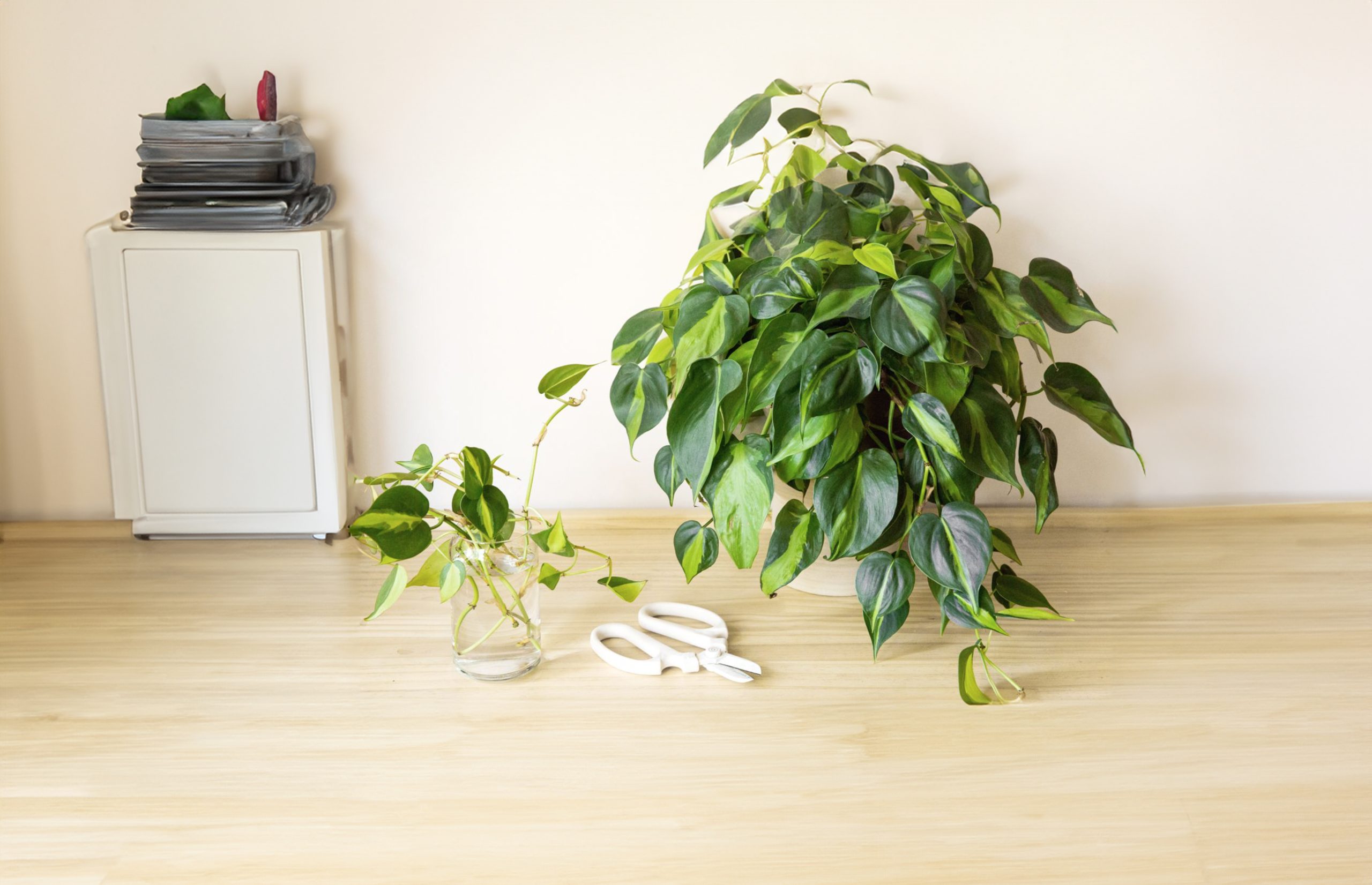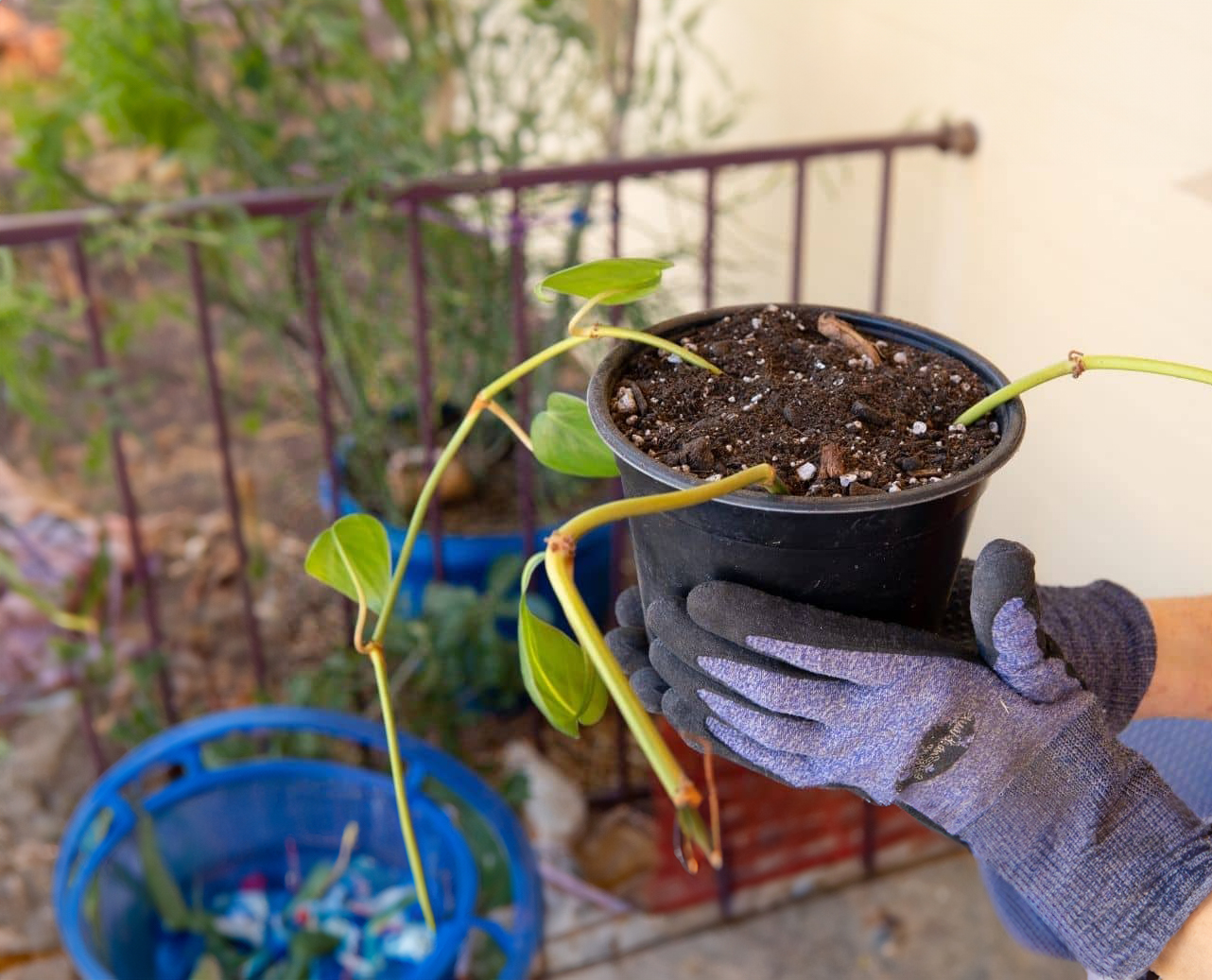Unlock the secrets of philodendron propagation in just 5 easy steps with our comprehensive guide. Learn to expand your indoor jungle effortlessly, nurturing new growth from a single plant. Perfect for beginners and seasoned gardeners alike, this guide will walk you through the process of creating more lush, heart-shaped foliage for your home.
Selecting a Healthy Mother Plant
The first step in philodendron propagation is choosing a vigorous, healthy mother plant. Select a philodendron that is well-established, at least 2 years old, and has an extensive root system. The mother plant should not show any signs of disease, pests, or nutrient deficiencies. Also, avoid taking cuttings from philodendrons that are stressed from recent repotting, pruning, or high temperatures. A robust mother plant will result in the best propagation success.
Ideally, choose a plant that is actively growing and produce several long vining stems. Longer stem cuttings will contain more nodes for new root growth. Nodes are the small brownish bumps along the stem where leaves emerge. Propagation is most successful when there are 2 or more nodes on each cutting.

Taking Stem Cuttings
Once you have identified a suitable mother philodendron, the next step is taking cuttings:
- Use sterile, sharp scissors or garden shears to remove a stem 6-8 inches long. Cut just below a node, removing at least 2 nodes on the cutting.
- Take several cuttings from different areas around the mother plant, being careful not to damage or stress the philodendron.
- Remove the leaves from the lower 1-2 nodes of each cutting to allow for better root formation. The top leaves can be left intact to provide energy for new growth.
- Optional: Dip the cut end of each cutting in rooting hormone powder to encourage faster root development. Tap off any excess powder.
- Place cuttings in a jar of room temperature water until you are ready to plant them. This will prevent the cut ends from drying out.

Selecting the Propagation Method
Philodendrons can be propagated in either water or soil. Each method has its advantages:
Water Propagation
Propagating philodendron cuttings in water is an easy method and allows you to observe the rooting process. To water propagate:
- Fill glass jars, vases, or other containers with room temperature water. The vessel should be large enough to suspend the cuttings so the lower portion is submerged.
- Place each philodendron cutting in the water, ensuring the lower nodes are covered by 1-2 inches of water.
- Set the container in a bright location, but avoid direct sunlight. Roots will develop faster in warmer conditions between 70°F-80°F.
- Change the water every 5-7 days to prevent rot and algae growth.
- Look for new white roots emerging from nodes after 2-3 weeks. The cuttings are ready to be potted once the root system is 1-2 inches long.

“Explore the Exceptional 2023 Philodendron Variegata Collection: A Curated Selection of the Rarest and Most Unique Varieties Available.”
Soil Propagation
Propagating directly in a potting mix avoids the extra step of transferring from water. Follow these tips for soil propagation:
- Use a well-draining potting mix, such as an equal blend of peat moss, perlite, and compost. Moisture-retentive mixes may lead to rot.
- Fill small pots or cell packs with the potting medium. Make a hole in the center with a pencil to insert the cutting.
- Insert each philodendron cutting 2-3 inches deep, gently firming the soil around it.
- Keep the soil consistently moist but not soaked. Reduce watering if condensation forms on the plastic propagation dome.
- Place pots in a warm area with indirect light. Enclosing pots in a clear plastic bag or dome will boost humidity for faster rooting.
- Most cuttings will be fully rooted and ready for repotting in 4-6 weeks. Tug gently on stems to check for resistance from new roots.

Caring for Rooted Philodendron Cuttings
Once your philodendron cuttings have developed an abundant root system in water or soil, they can be transplanted into potting mix and treated like mature plants. Here are some tips for caring for newly propagated philodendrons:
- Gently loosen any crowded roots before planting into a pot. This encourages roots to grow outward into the new soil.
- Use a houseplant potting mix amended with perlite or orchid bark for improved drainage.
- Water thoroughly after transplanting to remove any air pockets in the soil. Allow the soil to partially dry out between waterings.
- Increase light levels gradually over 2-3 weeks to adapt the new plant to brighter conditions. Avoid direct sun which can scorch leaves.
- Apply a balanced liquid fertilizer every 2-3 weeks during the growing season for strong growth. Reduce fertilizer in winter.
- Stake vining stems if needed to encourage the philodendron to grow upright rather than trailing.
With proper care, propagated philodendron cuttings will quickly establish as vigorous houseplants. Enjoy watching your new plants thrive!
Troubleshooting Propagation Problems
While philodendron propagation is quite simple, you may encounter a few issues along the way. Here are some common problems and solutions:
Rotting cuttings: If stem cuttings turn mushy and brown in water or soil, rot is likely occurring. Improve drainage, change the water frequently, and avoid overwatering potted cuttings. Dipping cut ends in cinnamon powder can help prevent rot.
Small roots or no new roots: Low temperatures, inadequate moisture, or low humidity may prevent root formation. Boost ambient warmth and humidity while ensuring the soil or water stays evenly moist.
Leaf yellowing: If new leaves turn yellow and drop soon after appearing, the cutting may be lacking nutrients. Apply a dilute fertilizer to cuttings once new roots have formed.
Few or no new leaves: When cuttings fail to produce new leaves, it is often from insufficient light. Gradually move philodendrons to brighter locations once rooted.
Leggy or sparse growth: After transplanting, poor soil quality, low light, or dry soil can cause weak, stretched out growth. Use an amended potting mix, increase light intensity, and maintain even moisture.
With the right care, following the steps outlined above will lead to success propagating philodendron! Be patient, make adjustments as needed, and you will have lovely new plants.
Where to buy philodendron? Benefits from importing plants from Thailand
- Shipping: Door to door shipping, fast and safe with Dragon Courier
- Biodiversity: Thailand is known for its rich biodiversity, including a wide variety of aroid species. This diversity allows importers to access a broad range of unique and exotic aroid plants.
- Quality and Health of Plants: The suitable climate helps the plants grown here stay healthy and of high quality.
- Cost-Effectiveness: Due to favorable growing conditions and efficient production methods, Thai aroid plants can often be more cost-effective compared to those from other countries.
- Access to Hybrid Varieties: Thai growers are often involved in the development of new hybrid aroid varieties, offering unique plants that may not be available from other sources.
Philodendron species are the most sought after by aroid plant lovers
Conclusion
Propagating philodendron houseplants through stem cuttings is an easy, rewarding way to expand your plant collection. In just a few weeks, each cutting can develop into a brand new, attractive philodendron. Whether you choose to root cuttings in water or potting mix, the keys are providing warm, humid conditions and keeping a close eye on moisture levels. By following the tips in this guide, you can propagate multiple philodendron plants from just one mother plant. Share the joy of philodendrons with all your plant-loving friends and family!





















